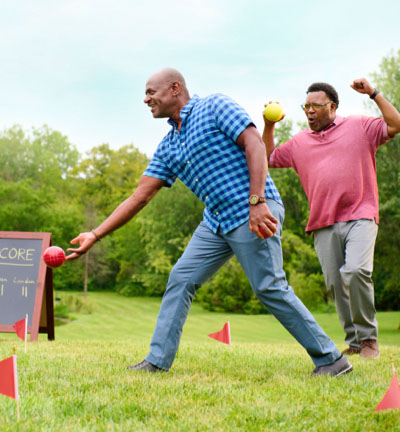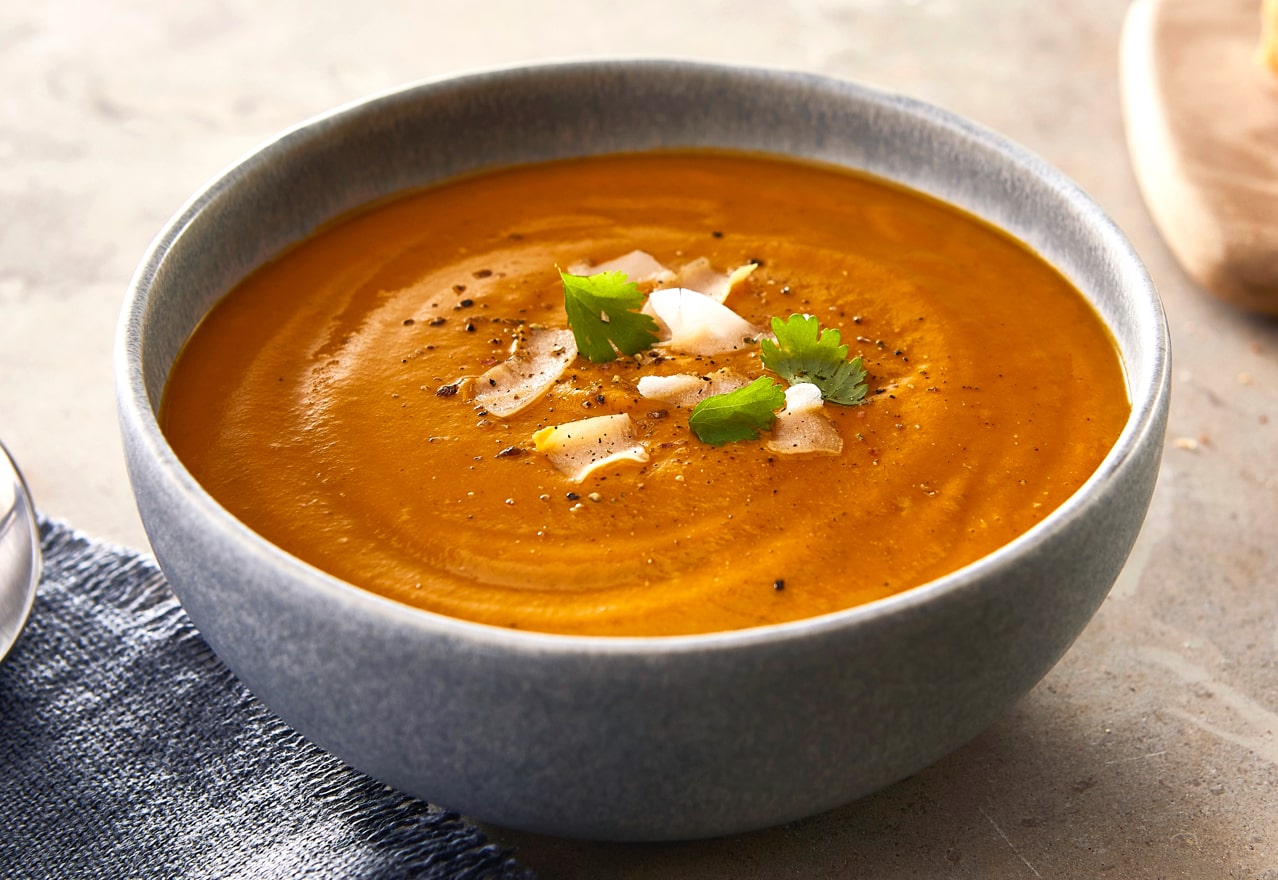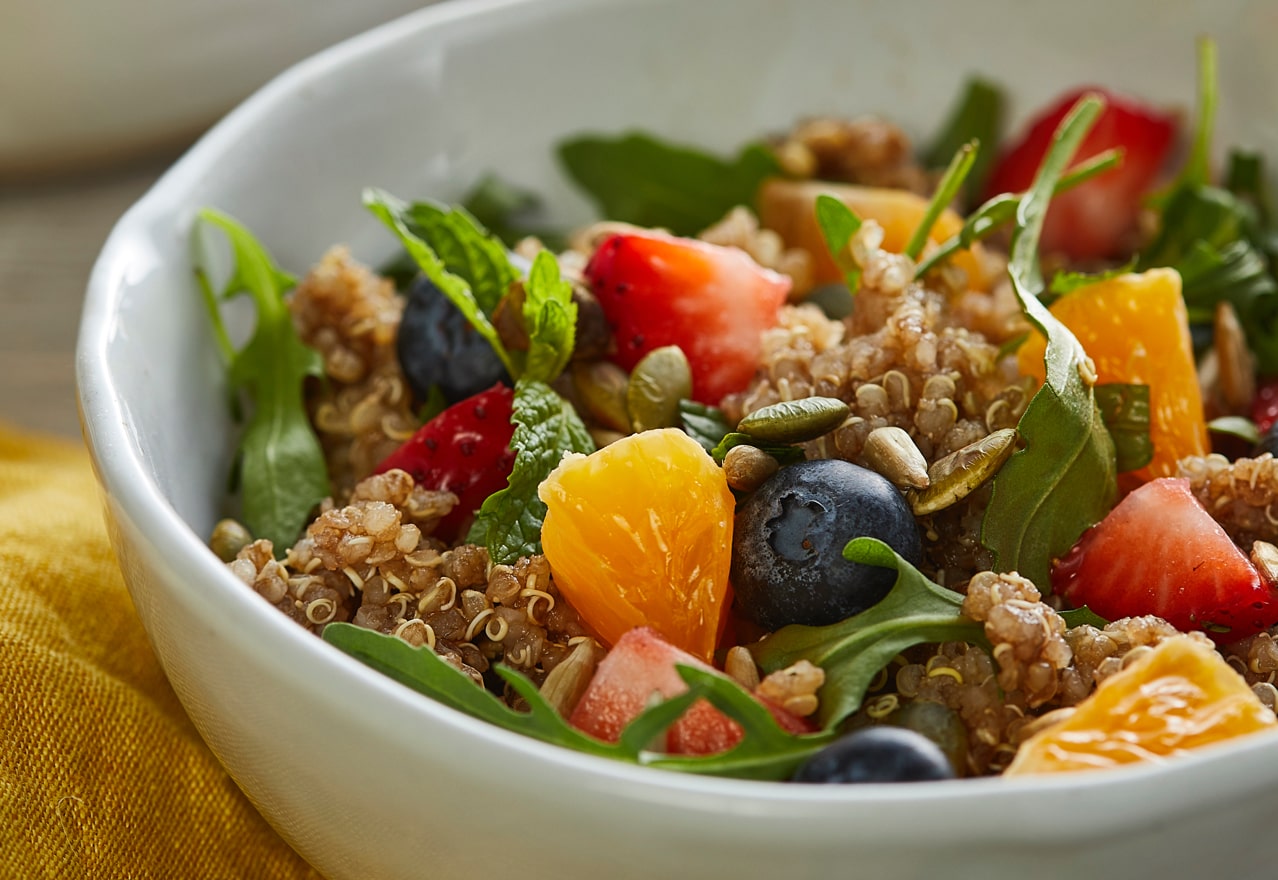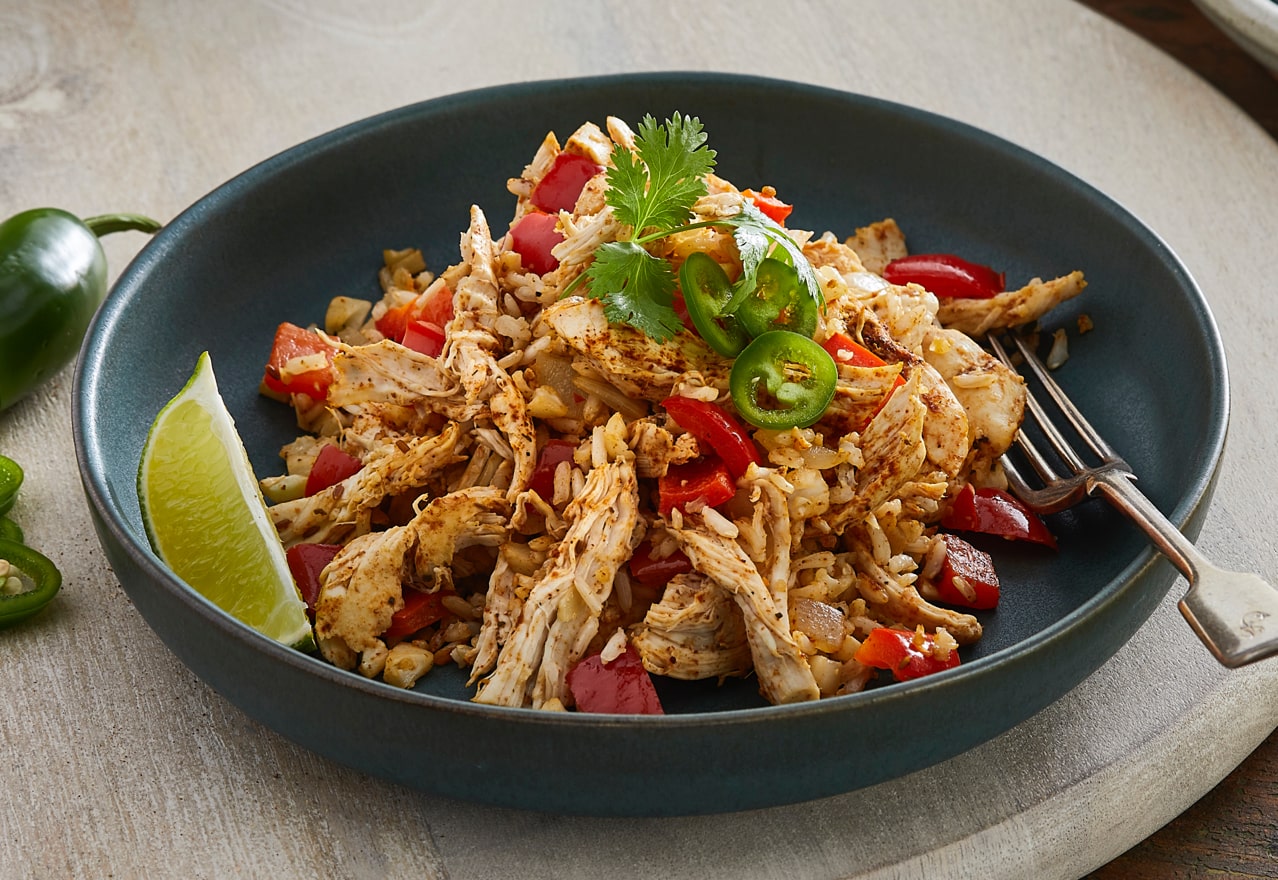Kick off the new year with meal prepping strategies customized for people living with myasthenia gravis (MG).
Have you, like many others, resolved to eat healthier this year? Healthy eating is a worthy goal, and a lot can be achieved simply by eating less takeout and processed food. However, for those with myasthenia gravis symptoms, this resolution may cause more muscle fatigue from extra time spent in the kitchen.1 Fortunately, meal prepping, or cooking meals in advance, can be a flexible way to make home cooking more practical.
MG United partnered with Chef Kim Mills and Megan Stanley, a certified nutritionist, to create this step-by-step meal prep guide for people living with MG. While this guide can help you get started, keep in mind that there is no one correct way to meal prep. Create a plan that matches your energy, schedule, cooking ability and food preferences. Don’t worry if your first meal prep doesn’t go as well as you had hoped. Like any new habit, you’ll get better at it as time goes on.
With meal prep, you have more control over what you put into your body.
Step 1: Plan Out Your Meals
Meal prepping requires some planning. When deciding what to cook, keep these few things in mind:
- Start small. Picking one or two simple meals that you have made before could limit the stress of trying to make something new.
- "Pair off" your meals. Choosing a couple of recipes that share some key ingredients can help you cook multiple meals at the same time.
- Buy versatile ingredients. Ingredients that can be used in many ways make it easy to have a delicious variety. For example, fruits can be eaten plain as a snack, frozen for smoothies, added on top of salads or baked into desserts.
When it comes to shopping, go in with a plan.
Step 2: Go Shopping
Grocery shopping can be tiring, but there are some ways to make the process a little easier. Here are some tips to help maximize your shopping experience:
- Consider shopping online. Grocery delivery and curbside pickup are becoming more and more customary. You can browse the aisles to find the exact items you need when it is most convenient, without ever having to leave your home.
- Find a shopping buddy. A friend or family member can make the process more enjoyable. Plus, they may be able to help you lift some of the heavier items.
- Check out prechopped meats, fruits and vegetables. They may cost a little more, but you may save some time or energy in the kitchen later.
- Buy precooked meats. These can be great options to save time in the kitchen since these meats will simply need to be reheated and are often already seasoned. Just be sure to check the sodium content is not too high for your needs.
Step 3: Start Cooking
Once you have all your ingredients, you're ready to start cooking. Consider these tips that may make your time in the kitchen less tiring and more enjoyable:
- Cook when it's best for you. Pick one day to cook and then have a backup day in case you aren't feeling well.
- Make your kitchen work for you. Consider using or investing in a few appliances to make meal prepping less physical or a little faster.
If you stick with and invest in the basics, it's going to make your life easier. You're working smarter, not harder.
Step 4: Store Strategically
Once the meals are cooked, refrigeration and freezing are key-especially since forgotten food can quickly lead to waste and packed freezers. Consider these tips to keep your meals tasty and fresh for when you’re ready to eat them:
- Freeze in portions. You can save time and energy by freezing your meals in the portions you’ll eat them so that it doesn’t take as long to thaw the food you’re going to eat for each meal.
- Know what not to freeze. Avoid freezing foods that have a lot of water in them like tomatoes, watermelon and salads. Thawing them will leave them unpleasantly mushy.
- Label your prepped food. Masking tape and a permanent black marker can be used to label freezer bags, bowls and plasticware with what the meal is and the date it was cooked. Now you will be able to tell when items pass their expiration dates.
- Defrost frozen foods in the fridge. Food typically tastes better when it defrosts slowly. Plus, bacteria grow more slowly in the cold.2
- Know when to toss it. Check out this chart to see how long different types of food can safely be stored in the fridge or freezer.
Step 5: Enjoy!
Now when myasthenia gravis symptoms make it hard to cook, you'll already know what's for dinner: delicious, homemade, pre-portioned, MG-friendly meals!
Ready to get started? Check out some easy-to-prepare and MG-friendly recipes on MG United, and sign up to get notified when new recipes are available.
Please consult your healthcare team for which recipes are best for your dietary needs, whether any modifications would be appropriate, and consider any allergies or dietary restrictions before making these recipes.











